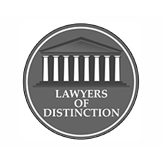Intersections are among the most hazardous locations on California roadways—and when poor design, lack of signage, or inadequate maintenance leads to a crash, victims often ask: Can I sue the city? In San Diego, the answer is yes—but only under specific conditions. California law allows individuals to file claims against public entities for injuries caused by dangerous conditions on public property, including intersections. However, strict procedures and deadlines apply.
This article explains when and how you can sue the City of San Diego for a dangerous intersection, what qualifies as a “dangerous condition,” and how to build a strong claim.
What Is a “Dangerous Condition” Under California Law?
California Government Code § 830 defines a dangerous condition as:
“A condition of property that creates a substantial risk of injury when used with due care in a reasonably foreseeable manner.”
In the context of intersections, this may include:
- Missing or obscured stop signs
- Defective traffic signals
- Poor visibility due to overgrown vegetation or lighting issues
- Confusing lane markings or signage
- Lack of pedestrian crosswalks or safety features
- Design flaws that increase collision risk
Each case depends on its facts. Courts consider whether the condition posed a substantial risk to users exercising reasonable care2.
Can You Sue the City of San Diego?
Yes—if the intersection meets the legal definition of a dangerous condition and the city owned or controlled the property. Under California Government Code § 835, a public entity like the City of San Diego may be liable if:
- The property was in a dangerous condition at the time of injury
- The condition created a reasonably foreseeable risk
- The injury was proximately caused by the condition
- The city either:
- Created the condition through negligence, or
- Had actual or constructive notice and failed to fix it in time
However, sovereign immunity limits lawsuits against public entities. You must follow the California Claims Act, which requires filing a government claim before suing.
Filing a Claim Against the City of San Diego
To sue the city, you must first submit a Claim Against the City of San Diego within six months of the incident. The form is available through the city’s Risk Management Department.
Steps to File:
- Complete the claim form with details of the incident, location, injuries, and damages
- Submit the form to the City of San Diego within six months
- Wait for a response—the city has 45 days to accept or reject the claim
- If rejected, you have six months from the rejection date to file a lawsuit
Failure to meet these deadlines may bar your claim entirely.
What Evidence Strengthens a Dangerous Intersection Claim?
To prove liability, you’ll need to show that the intersection posed a substantial risk and that the city knew or should have known about it. Key evidence includes:
- Photos or video of the intersection and hazard
- Police reports documenting the crash
- Witness statements
- Accident history at the same location
- City maintenance records or prior complaints
- Expert analysis from traffic engineers or roadway safety professionals
You can request public records under the California Public Records Act (CPRA) to uncover prior incidents or design flaws2.
Common Defenses by the City
The City of San Diego may argue:
- The intersection was not dangerous when used with due care
- The condition was trivial or insignificant
- The city had no notice of the hazard
- The injury resulted from driver error or misuse
- The design was approved and immune under discretionary design immunity
Your attorney can counter these defenses with expert testimony, accident data, and evidence of prior complaints or studies.
Real-Life Example
A San Diego resident was injured in a collision at an intersection lacking a stop sign despite multiple prior accidents. The city had received complaints but failed to act. The victim’s attorney filed a government claim and later a lawsuit under § 835. The case settled for $1.6 million, covering medical expenses, lost wages, and pain and suffering.
What to Do If You’re Injured at a Dangerous Intersection
- Seek medical attention immediately
- Report the incident to police and document the scene
- Take photos of the intersection and any hazards
- Collect witness information
- File a government claim within six months
- Consult a San Diego pedestrian accident lawyer experienced in public entity claims
Prompt action helps preserve evidence and ensures compliance with legal deadlines.
Final Thoughts
Yes, you can sue the City of San Diego for a dangerous intersection—but only if you follow the right steps. California law allows claims against public entities for hazardous road conditions, but strict procedures and deadlines apply. With strong evidence and legal guidance, injured individuals can pursue compensation and hold the city accountable for unsafe infrastructure.
References
- California Government Code § 830. https://leginfo.legislature.ca.gov/faces/codes_displaySection.xhtml?lawCode=GOV§ionNum=830
- California Government Code § 835. https://leginfo.legislature.ca.gov/faces/codes_displaySection.xhtml?lawCode=GOV§ionNum=835
- California Government Code § 911.2. https://leginfo.legislature.ca.gov/faces/codes_displaySection.xhtml?lawCode=GOV§ionNum=911.2
- Proving a Condition of Public Property Is Dangerous
- Dangerous Conditions on Public Property – Singleton Schreiber
- How to File a Claim Against the City of San Diego – Evan Walker Law
- Dangerous Roadways and Defective Intersections – Estey & Bomberger





